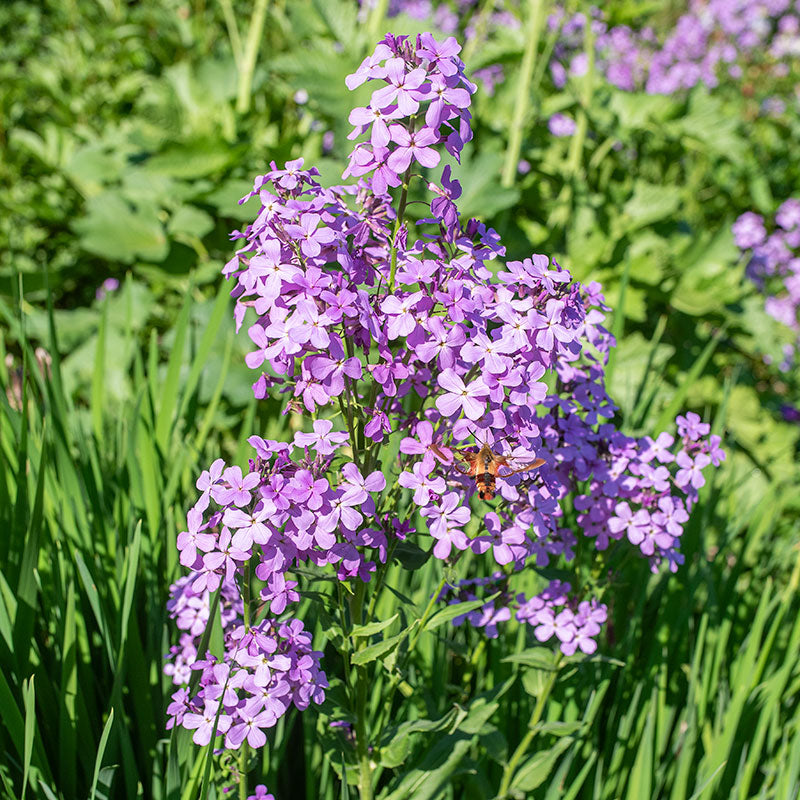Seed Packet
Sweet Rocket 'Violet'
Hesperis matronalis
Prized by generations past, this biennial has escaped the garden to grow happily in damp thickets. The epitome of an old-fashioned flower, the evening-scented blooms are redolent of clove and violet, hence its other name, 'Dame's Violet.' Marie Antoinette was enamored of the double white, and while in prison, "the concierge daily brought her bunches of pinks, sweet rockets and tuberoses, an act of gentleness for which she was imprisoned but eventually released." Listed in an 1838 catalog. Self-sows to reappear every year and can escape to establish into roadside wet ditches. Cannot ship to IN, ME, OH, WI.
SKU #S162
































